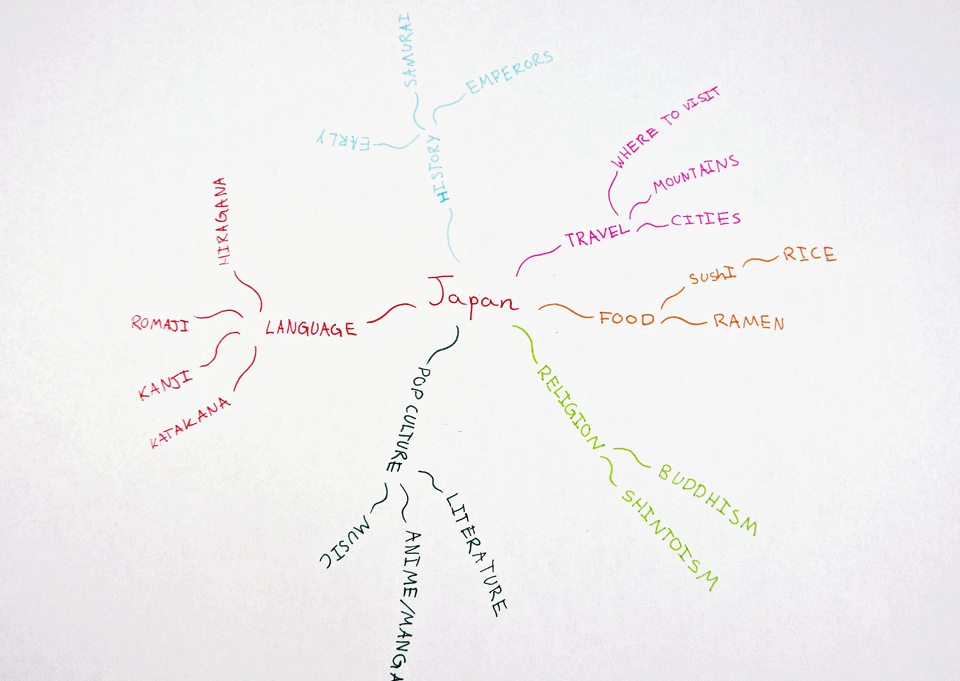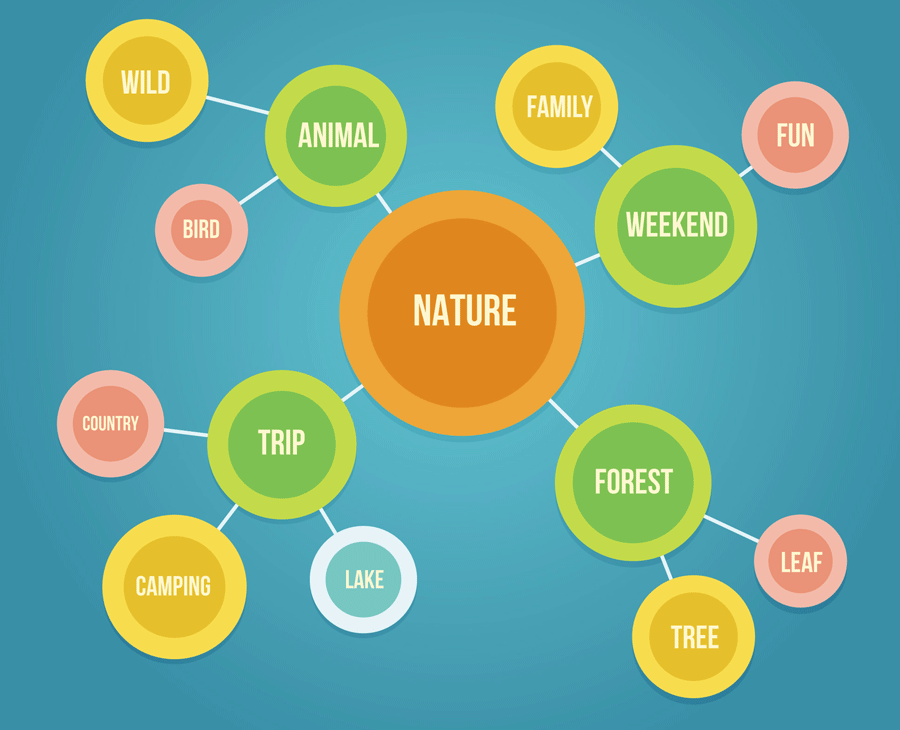Mind mapping is a tool used to capture and organise thoughts in visual form. Whether used for thinking about new topics or revising, it helps boost creativity, problem solving and memorising, by the use of association.
A mind map is a hierarchical diagram of relationship that connects information around a central concept. Often likened to a tree, the central subject is the tree trunk and from it radiate the branches of associated knowledge. Major ideas connect directly to the central theme and other ideas then branch out from those first ideas.
Mind maps help create an overview of a large subject, while simultaneously drilling down into larger quantities of information. They mimic the way the brain uses natural associations to be both intuitive and creative. Children with high learning potential often think faster than they are able to write, and mind maps are a great way for them to capture thoughts quickly, with minimum effort and with a broader perspective. (Mind maps are designed to explore relationships around a single theme. If modelling complex relationships between different pieces of information with multiple cross-parent-child links is required, then concept maps, which model knowledge in a downward hierarchical relationship should be explored instead.)

Mind map for Japan – 1st level associations
How to create a mindmap
- Start with a central subject – a problem, thought, something you want to explore in more detail. Place that subject in the centre of the sheet to allow associations to spread in all directions. Using images rather than just words can help create a focus point.
- From that central point create your main branches or associations and from those first branches radiate other branches. As the brain works by association, it finds linking ideas together easier to remember and understand than long lists. Keep the first level branches to a maximum of seven as this is easier for the brain to work with.

Mind Map for Japan – 2nd level associations
- Use curved lines to link the branch levels. The brain reacts better to curves than straight lines.
- Use a single keyword per branch. This offers flexibility, creativity and clarity. Sentences limit associations. Keeping the word to the approximate length of the curved line will also help associate the word better.
- Use colours and images. The brain remembers colour and images better and it helps stimulate focus and imagination.
- Less is more. A cluttered mind map can be confusing. If you find an area you want to explore in more detail, start a new mind map for that subject.

Mind map of Japan – 3rd level associations
Software

While many people enjoy the creativity and freedom involved in mind mapping with pens and paper, computers have their own advantages – they allow for revision and adaptation of maps over a period of time, have the potential for collaborative working, and they have great visual flexibility. Different versions of computer software offer mind mapping or hybrids between it and other visual diagrams such as concept mapping. Free and paid versions of mind mapping software include:
- https://coggle.it/ Free or paid versions
- https://thebrain.com/ Free version
- http://freemind.sourceforge.net/wiki/index.php/Main_Page Open source free version
- https://www.mindmup.com/ Free or paid versions
- https://www.canva.com/graphs/mind-maps/ Free or paid versions
- https://www.imindq.com/ Free trial
- https://www.ayoa.com/ Free trial – this software is associated with Tony Buzan, inventor of the term “mind map”
- https://www.matchware.com/mind-mapping-software Free trial. This software has an assistive technology version
Mind maps are as individual as the person who creates them. Whether your preference is pen and paper or computer software, monochrome or colour, images or none, single words or sentences, the mindmap is a representation of what works best for the individual. To explore this further check out mind map examples : https://mindmapsunleashed.com/10-really-cool-mind-mapping-examples-you-will-learn-from , http://www.mindmapart.com/ , and read this blog for tips in how to speed up creating mind maps. http://learningfundamentals.com.au/blog/how-to-speed-up-your-mind-mapping-tricks-of-the-trade/
Mind map examples: Japan – created by Young Reporter Francesca Glover. Nature Mind Map created by Freepik
About the Author: Geraldine Glover is Potential Plus UK’s Community Information Coordinator. She is a Chartered Information Professional with a background in editorial work and information science. She is the mother of two children with high learning potential.





